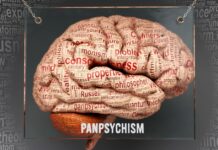If so, it was a lot more vicious than the one we’ve been hiding from recently (well, some of us have been hiding from).
You know the expression deja vu (French: been here before or more exactly seen this already!)
Well there was a great pandemic, worldwide, in 1892. Some people think it could have been the first COVID pandemic. I am so suspicious of scientific liars and phoneys, trying to bend the facts to fit crackpot fake news by the mainstream, I’m not sure. But the event was a fascinating preview of what was to come over a century later.
And although it was labeled “Russian flu”, there are some atypical symptoms that mimic the corona virus closer than the flu.
So the old saying “There is nothing new under the Sun” may be true! It would be no surprise; after all, millions of individuals suffer from corona virus infection every winter. It’s called “the common cold” and it’s been with us for millennia.
As the name implies, the Russian flu was described as influenza. Remember, at the time, viruses were still unknown and in 1892, Richard Pfeiffer, a collaborator of Robert Koch, isolated a bacterium, which he called Haemophilus influenzae, thinking it to be the cause of flu (in fact it only shows up as an opportunist in people laid low by real (viral) flu).
The 1892 pandemic was notable in that it took out some pretty influential people, including Prince Albert Victor, better known as Eddy (not THE Prince Albert). Eddy, the Duke of Clarence, was second in line to the British throne after his father, the eldest son of Queen Victoria and was great-uncle to our present Queen Elizabeth II.
The delicate prince had just turned 28, and he looked forward to marrying his fiancée and living the easy life of an aristocrat until he became king in future years. Critics called him dull and dumb—everybody knew he was far from an intellectual—in fact what we British commoners call an “upper class twit”!
To celebrate his birthday in the winter of 1892, he traveled to the royal family’s Norfolk home, Sandringham House and went out hunting despite a cold. He came back shivering with chills and promptly developed pneumonia.
As the prince’s fever hit 107° F, he raved deliriously and finally died, killed by a stubborn unknown virus that snuffed the lives of an estimated 1.5 million people across almost every corner of the planet.
London’s Illustrated Police News depicting the Russian Flu pandemic of 1892.
The “Russian flu”, as it was christened, is now mostly forgotten, although it killed roughly one in 1,400 people worldwide, making it as deadly as the 2-plus years of the COVID-19 pandemic. Moreover, researchers say that there’s evidence that it was actually a coronavirus and may offer lessons for us today.
Like COVID-19, the Russian flu kept coming back in wave after wave over a number of years. This was in a time before vaccines, antiviral drugs, and mechanical ventilators. Also, some infected people appear to have suffered from the equivalent to “long COVID,” which caused extreme fatigue and mental disturbances.
Roads and Railways Maybe To Blame
The Russian flu got its name after the first reported outbreak struck St. Petersburg in 1889. The disease spread rapidly to other European capitals following the course of railways and roads, and to North and South America via international shipping lines. Contemporary accounts suggest it took only 4 months to circumnavigate the globe, peaking in the United States 70 days after the original start up in St. Petersburg.
The virus hit every continent, even striking more isolated areas such as Madagascar, Australia, New Zealand, Iceland, Greenland, and a Swedish town north of the Arctic Circle. As many as 90% of people in Portugal may have been infected.
In all, it is estimated some 110,000 Britons perished in the three waves of the Russian pandemic – a total which approaches the mortality from the better known 1918-19 ‘Spanish flu’. However, while the Spanish flu has been the subject of several books and films, the Russian flu has been truly forgotten.
Experts estimate that the 1892 pandemic killed about 1 million people out of a world population of only 1.5 billion at the time. That is 0.066%, or roughly one in every 1,500 humans alive at that time. The estimated death rate of COVID-19 is nearly identical so far: 5.8 million of a world population of 7.9 billion, or 0.073% — roughly one in 1,400.
The pandemic was similar to COVID-19 in remarkable ways. According to historian Mark Honigsbaum, in his book A History Of The Great Influenza Pandemics, “It was an event intimately linked to modern transportation and global communications technologies, and in which fear, panic, and misinformation were amplified by the news media.”
Nothing new there, then!
Similarity With COVID
On the clinical front, the Russian flu and COVID-19 also share symptoms, including some that are “rather untypical for influenza viruses in humans,” said Harald Brüssow, PhD, a virologist in Switzerland and leading proponent of the coronavirus hypothesis. Physicians reported high fevers, dry coughs, headaches and eyeball pain, and loss of taste and smell, according to a report by Brüssow that appeared last summer in Microbial Biotechnology, which he edits.
In an interview with MedPage Today, Brüssow noted other similarities to COVID-19, such as possible re-infections and higher rates among the obese and the elderly. In contrast, the much deadlier Spanish flu pandemic of 1918 famously struck the young, possibly because their generation lacked immunity.
[https://www.medpagetoday.com/infectiousdisease/covid19/97198]
In addition, “there is some contemporary literature about signs that resemble what is now called long COVID” following infection during the Russian flu pandemic, Brüssow said. “And there is indirect evidence of the Russian flu extending over several years, which is untypical for influenza. Influenza seems to evolve more by recombination of its segmented RNA genome than by the evolution of new variants that cause new infection waves,” (which is what corona viruses do).
Final Note: no fewer than three European princes died of it: Amadeo I of Spain (at age 44), Prince Baudouin of Belgium (at age 21), and Prince Albert Victor (at age 28), heir to the English throne. So, unlike the current virus, it was not mild for young people.
As for the long-term future, virologist Shane Crotty, PhD, of La Jolla Institute for Immunology, told MedPage Today that it’s reasonable to suspect that the Russian flu was caused by a coronavirus, and that’s important. “We shouldn’t think of SARS-CoV-2 as being a really unique, once-in-a-millennium type of event,” he said. “Coronaviruses have probably done this before, and probably can do this again.
That sidesteps the question of whether SARS-CoV-2 was manufactured or not.
Empower yourself with knowledge! Learn more about how you can take steps to fortify your immune system today. Click here ? https://virusblitzing.com/
To your good health,
Prof. Keith Scott-Mumby
The Official Alternative Doctor





